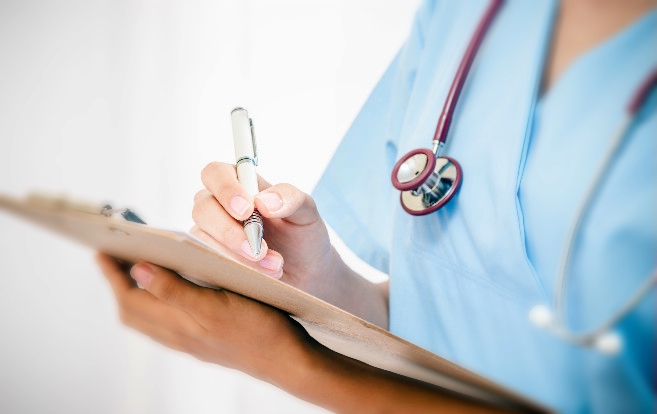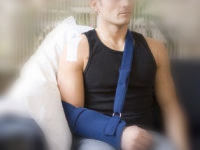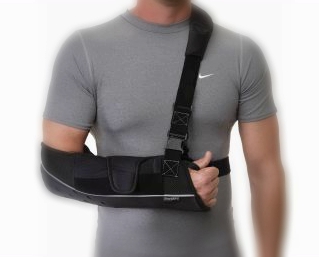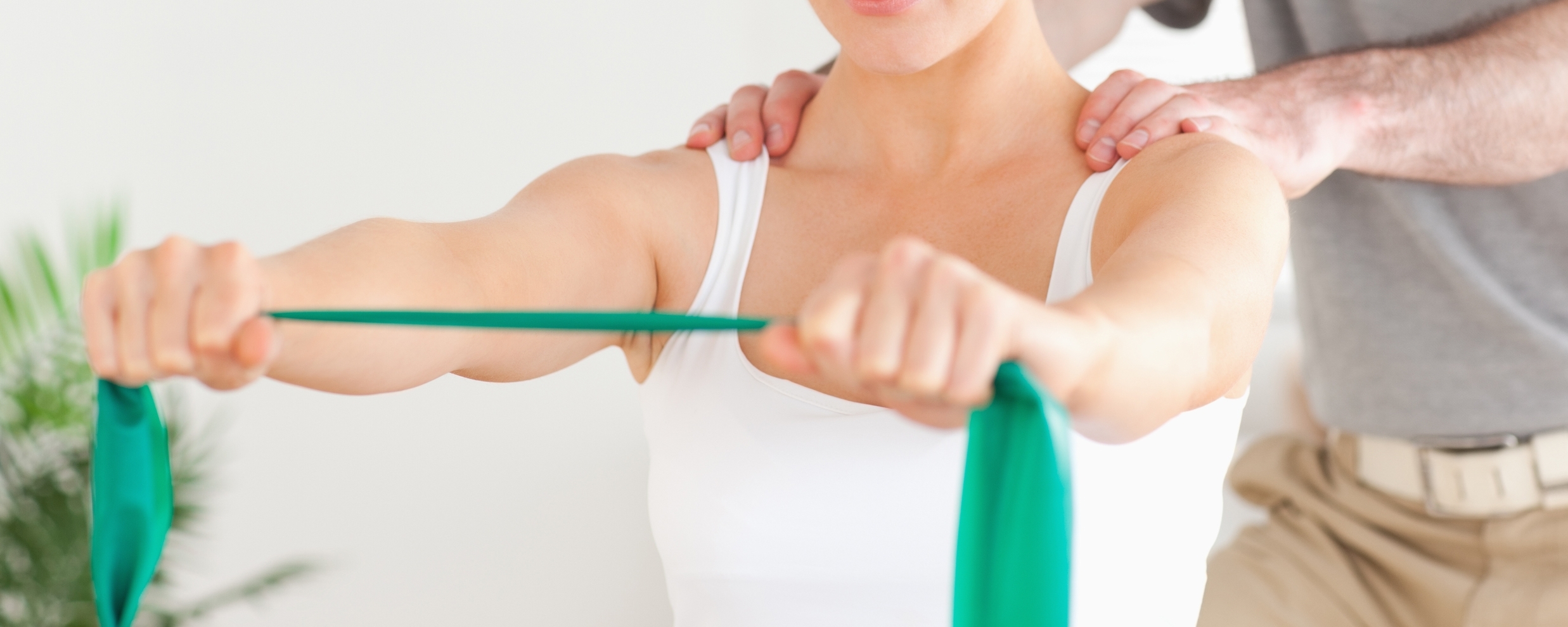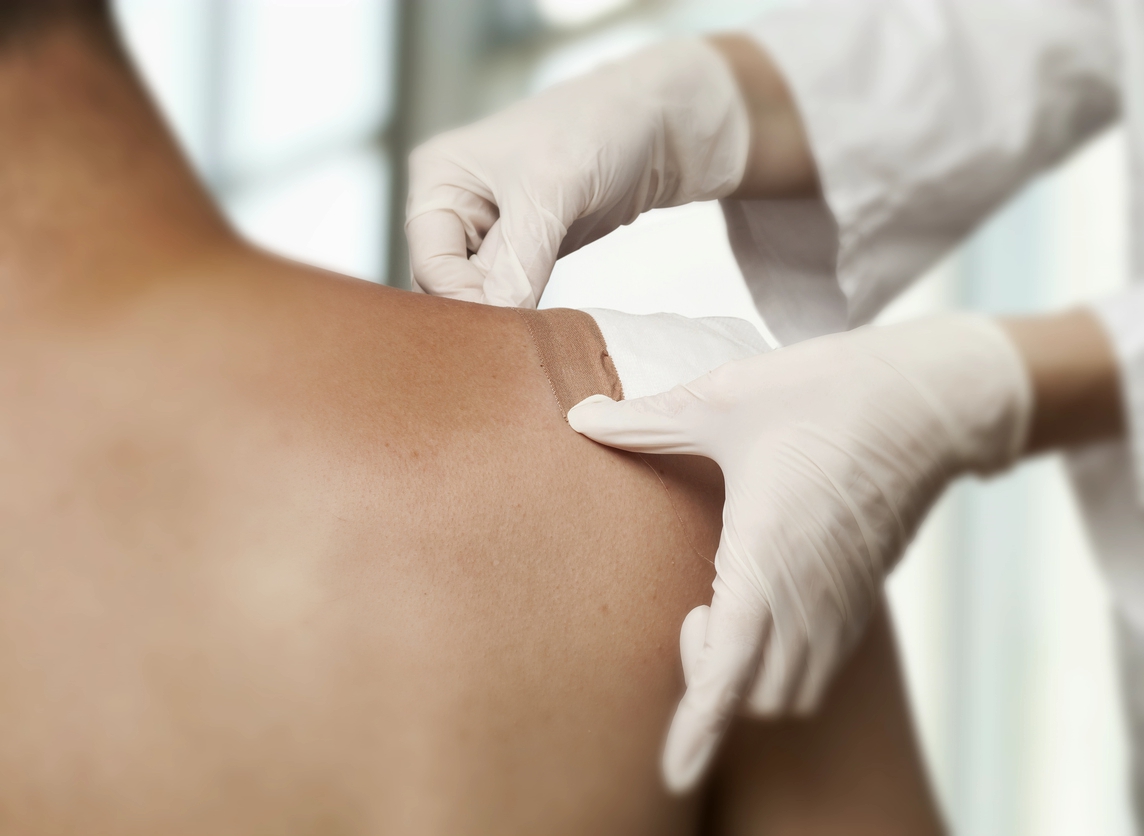Having an Operation
Going to the Hospital
In your Preoperative Information you will be asked to have nothing to eat or drink for around 6 hours prior to your admission. If you are having your operation under a General Anaesthetic or sedation it is important to know that you are not considered legally safe to drive for 24 hours after this. You may need to take this into account if you are considering driving yourself to the hospital and then home.
If you are having your surgery as an overnight stay you will need to bring overnight clothing and toiletries. Following some procedures, it may be possible to plan to go home on the day of your operation depending on how you are feeling. In this situation ,we would provisionally organise a bed for an overnight stay and then allow you home earlier, if appropriate. As a general rule, most hospitals would require a patient to have been able to eat, drink and to have passed water and to have someone to take them home and stay with them overnight before allowing them to be discharged
If you are having your surgery as a Day-Case you will not be asked to bring in anything specific. You should be able to go home about 4 hours after your procedure. However, if your procedure involves sedation or a general anaesthetic, you will not be allowed to drive yourself home and will be required to have someone to collect you from the hospital and stay with you overnight.
The Spire Cambridge Lea Hospital, 30 New Road, Impington, Cambridge. CB24 9EL
https://www.spirehealthcare.com/spire-cambridge-lea-hospital
Nuffield Hospital Cambridge, 4 Trumpington Road, Cambridge. CB2 8AF
Before Your Surgery
Once you have reported to the hospital reception you will be taken through to your room on the Ward.
- Admitting Nurse – your admitting nurse will come and see you in your room. She will check your paperwork and put on your hospital i.d. wristband. She will take your pulse, blood pressure and temperature, will show you your theatre gown and tell you when to put it on and also answer any questions that you have.
- Physiotherapist – your physiotherapist will probably come and introduce themselves to you before your operation. They will be able to tell you the likely type of rehabilitation programme that you will need to undergo after your surgery and answer any specific questions that you have. They will come and see you again after you have had your operation.
- Anaesthetist – your Consultant Anaesthetist will come and see you in your room. They will go through your medical history and assess your fitness for an anaesthetic on the day. They will be able to discuss, in detail, the proposed anaesthetic for your procedure. They will also be able to tell you any options that might be available to you and let you talk about any specific preferences or concerns that you have around having an anaesthetic for surgery.
Find out more about anaesthtics…..
- Orthopaedic Surgeon – I will come and see you in your room before your surgery. We will be able to go through the planned procedure and I can answer any questions, issues or concerns that you have. I will mark your arm with a large arrow, to make sure that there are NO mistakes when we undertake your surgery! I will also go through the Consent Process and ask you to sign a standard hospital consent form, if you are happy to proceed.
Consent Process
You will be able to discuss the benefits, risks, potential complications and the likely course of recovery before your procedure. You will, where applicable, be made aware of any alternative treatment options. It is important that you ask any questions or issues that you wish to discuss at this point, you should have no concerns in doing so. Once you are happy you will be asked to sign a Consent Form to document the process.
After your Surgery
After your operation you will be taken around to the Recovery Area in the Theatre Complex. Here, your assigned Recovery Nurse will take care of you as you wake up. They will make sure that your observations are satisfactory, that you are comfortable and can administer any extra pain medication, as required. Once you have fully ‘come around’ and the nursing staff are happy, you will be taken back to your room on the Ward.
On the Ward, after your surgery, your recovery will be checked regularly by the ward nurses. You will be visited over-time by your physiotherapist, anaesthetist and myself. We will probably go through a lot of details and give out a lot of information. Do not worry, everything will be repeated and organized for you over your stay.
Pain Relief
Post-Operative Pain Relief
During your procedure you will have either been given an interscaelene nerve block or some local anaesthetic will have infiltrated around your wound. As a result, you should not really experience any significant pain when you wake up from your anaesthetic. If you are experiencing any pain, your Recovery Nurse will be able to administer an appropriate pain medication to settle this.
When your interscaelene nerve block or local anaesthetic wear off you may experience a varying amount of ‘rebound’ discomfort. To help to avoid this, or minimize the severity of your discomfort, your anaesthetist will have prescribed some regular oral pain killers. You may be asked to take these before your nerve block or local anaesthetic has worn off. It is advisable to take these as it will diminish the severity of your breakthrough pain when it happens. It is always easier to keep your pain at bay rather than allowing it to become a severe ‘break through’ pain, which may require stronger pain killers to control it.
You will be prescribed some appropriate take home pain killers by your anaesthetist, which will be dispensed by the Pharmacy on your discharge.
Immobilisation
Post-Operative Immobilisation
Depending on the procedure that you are having, when you wake up from your operation, you will be wearing a sling. The type of sling may vary in accordance to the exact procedure that you have had. The length of time that you need to wear the sling will depend on the type of operation that you have had and, often, on the quality of the repair.
After any surgical repair of a torn tendon or ligament, either by suturing the ends together or reattaching it to the bone, it is desirable to avoid placing too much load or tension on the repair. At the same time, the longer your shoulder is immobilized the stiffer it is likely to become.
However, there is a period during tendon and ligament healing where the repair is strong enough to start to take some load but not yet fully healed. In fact, for a tendon or ligament to heal as strongly as it can, it needs to be put under an increasing amount of load and tension to allow the tissues to re-model and mature.
My rationale for the period of initial immobilization and then mobilization and strengthening after a tendon or ligament repair is based on this. We want to immobilize and protect your repair for as long as is required to get it to a safe level of healing and then to mobilise your shoulder as soon as it is safe to avoid stiffness.
When a tendon or ligament has been repaired, there may still be some specific movements that your shoulder can make that won’t affect the repair. These are known as the ‘safe zones’ of movement and are detailed in the rehabilitation protocols for each procedure. This is something that the physiotherapists will be able to discuss and instruct you on.
The physiotherapists will visit you in your room to show you how to take the sling on and off. They will explain exactly what you can and cannot do with your arm and demonstrate some early exercises that you can do. For more details, please see the relevant rehabilitation protocol for your particular procedure.
Your Wound
Your Wound
At the end of your procedure your wound will usually be closed by a ‘subcuticular’ suture. This is a special type of stitch, beneath the skin, that has no knots and leaves a very neat scar. Some Steristrip adhesive tapes will be placed over the wound to help to keep it closed and retain the sutures. A standard small dressing will then be placed over the wound. After most arthroscopic shoulder procedures there can be quite a lot of swelling around the shoulder and a temporary pad will be placed over the dressings to help absorb any residual fluid.
Before you go home, the Ward Nurse will take down your dressing and check that the wound is satisfactory. She will then re-dress the wound with a water-proof dressing and give you some spare dressings to take home. It is safe to have a wash and shower with the dressings in place but, if the dressings get at all damp, you should remove them, dry the area and put one of the spare dressings on.
Your sutures will need to be removed by your local Practice Nurse at about 10 days after your operation. The Ward will give you a discharge letter for your Local Surgery, but you will need to organize an appointment. If this is not possible or if you would prefer for your sutures to be removed at the hospital, this can be organized.
Once your sutures have been removed you will not require a further dressing. You can get the area wet with no concerns.
Rehabilitation & Exercises
Post-Operative Rehabilitation & Exercises
You will need physiotherapy and to undertake a rehabilitation programme of exercises after your surgery. The in-patient physiotherapy team will come and see you , in your room, after your operation to discuss this with you.
They will be able to explain the specific Rehabilitation Programme that you will need to do and, if appropriate, instruct you on the exercises you should start straight away. They will also be able to outline the planned rehabilitation programme, including, when and how much you should be moving your shoulder as things progress. They will be able to show you how to safely take your sling on and off and how to dress and look after yourself when your arm is in a sling.
The in-patient physiotherapists will help to organize your further physiotherapy requirements after you have been discharged home. They will organize your further out-patient physiotherapy either at the hospital or, if you have previously been seeing your own physiotherapist or live a long way from the hospital, will be able to contact or suggest someone. They will be able to let these physiotherapists what procedure you have had done and the specific rehabilitation programme that you will need.
Return to Work
Return to Work After Your Surgery
This is very much dependent on the type of work that you do, whether you need to drive to get to work and the type of surgery that you have had done. As a rule, the effect of coming into hospital and having an operation with an anaesthetic often takes more out of people than they would expect. Generally, it is probably worth taking at least a week off form your regular work after having had any procedure.
Even if you need to have your arm in a sling following a procedure it is usually safe, when you are in a quiet environment, to take your arm out of the sling and to use your elbow and wrist. This should allow you to safely eat, write and to use a keyboard. The expected time to recovery for other movements and activities is outlined in the information about specific procedures. However, you, as the patient, have the best idea of the specific demands that are required of you to do your work safely and effectively. As a result, it is best to discuss any queries and concerns that you have about the expected post-operative recovery before your operation.
If you require a Medical Certificate for your work, this can be organized by the Ward.
Driving after Surgery
Driving after Your Shoulder Surgery
The time taken before someone can return to driving after shoulder surgery will depend on the type of procedure undertaken, the length of immobilisation (if required) and the recovery of active movements. To be able to drive safely you should be capable of actively moving your shoulder without assistance and without damaging the surgical repair. You should be able to react normally to avoid causing injury to yourself or others due to lack of control.
- It is a UK requirement that, unless specific dispensation has been granted by the DVLA, a driver uses both arms to control the steering wheel. To achieve this, the driver requires to have sufficient strength and mobility in their shoulder.
- It is the responsibility of the driver to ensure that they are in control of the vehicle at all times. They should be able to demonstrate this if stopped by the police.
- Drivers should check with their physiotherapist, surgeon and vehicle insurance policy before returning to drive after surgery.
- It is not a requirement to notify the DVLA unless the medical conditions likely to affect safe driving persist for longer than 3 months after the date of the surgery.
- Drivers must not drive under the influence of narcotic medications or within a minimum of 24 hours after an anaesthetic.
In Summary
- You are NOT allowed to drive one handed
- There is no precise time after surgery when you can return to driving, it varies from person to person. However, the recommended amount of time that your arm should be in a sling following surgery is the MINIMUM time before considering a return to driving
- You can return to driving when you are capable of moving your shoulder without assistance and are capable of driving safely and reacting appropriately in an emergency situation
- Although it is not essential it may be wise to discuss your return to driving with your insurance company
More information about the estimated time before returning to drive following a specific procedure can be found in the respective rehabilitation protocol section for each procedure
Sport and Exercise
Return to Sport and Exercise
This is very much dependent on the type and level of sport or exercise to which you would like to return, and to the type of procedure that you have had done. The expected time to recovery and return to certain general types of sport is outlined in the information about specific procedures.
The speed of recovery and progress for certain levels of activity can vary between patients undergoing the same procedure. This variability can often be monitored by your physiotherapist, personal trainer or coach, depending on the level of sport that you intend to return to. It will also be assessed at your post-operative consultations. As a result, the specific speed, realistic level and fine-tuning of your recovery can be tailored
Follow-Up & Emergency Contact
Clinic Follow-Up and Emergency Contact Details
I will come and see you in your room after your surgery to tell you how your procedure has gone. I will be able to answer any questions that you have and make sure that all of your post-operative arrangements are being made. We can then arrange your post-operative clinic appointment. My secretary will either visit you in your room on the Ward or contact you after your discharge to arrange this.
As a general rule, the initial post-operative clinic appointment is made for 4 weeks after your surgery. However, this can be varied depending on your availability.
If you have any significant problems or concerns following your discharge, there are a number of points of contact available.
- My Office – My office is always available during standard working hours during the week. They will always be able to contact me.
Tel No: 01223 789720 & 01223 362298
e-mail: office@cambridgeshoulder.co.uk
- The Ward – The Nurse Station on the Ward is manned 24 hours a day and is a good point-of-contact if you have a significant problem.
Spire Cambridge Lea – Nurses Station Tel No: 01223 266940
Nuffield Hospital Cambridge – Nurses Station Tel No: 01223 303336
- Your GP – Your GP Practice will be able to help with any immediate concerns and may be particularly useful for prescribing further or stronger pain killers
- A & E – In the unlikely event that you feel that you have a critical or urgent problem your local A & E Department is the safest and best place to attend.



